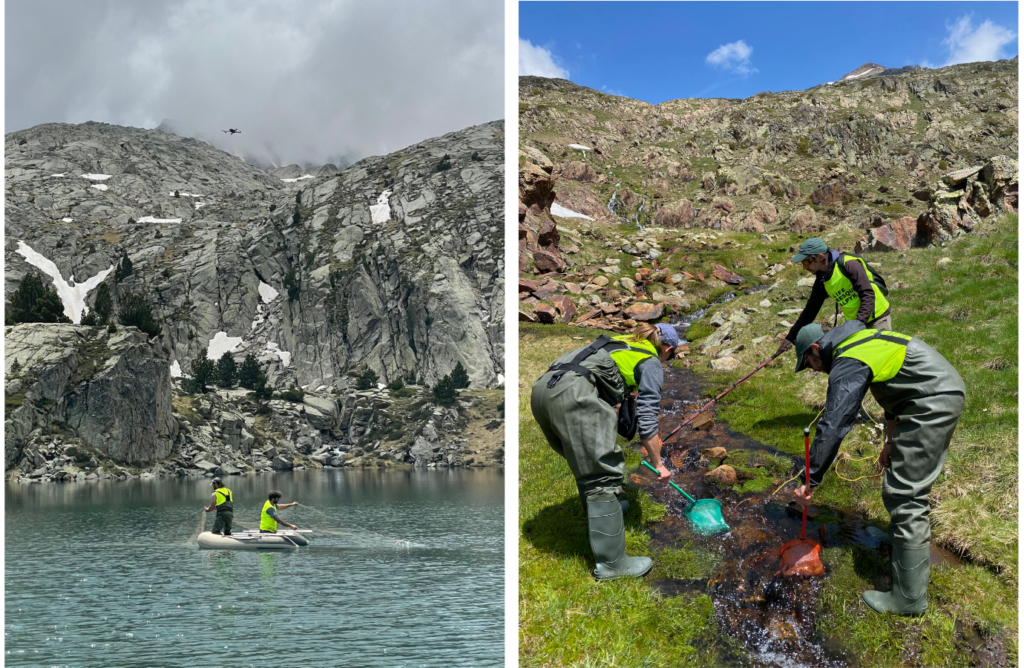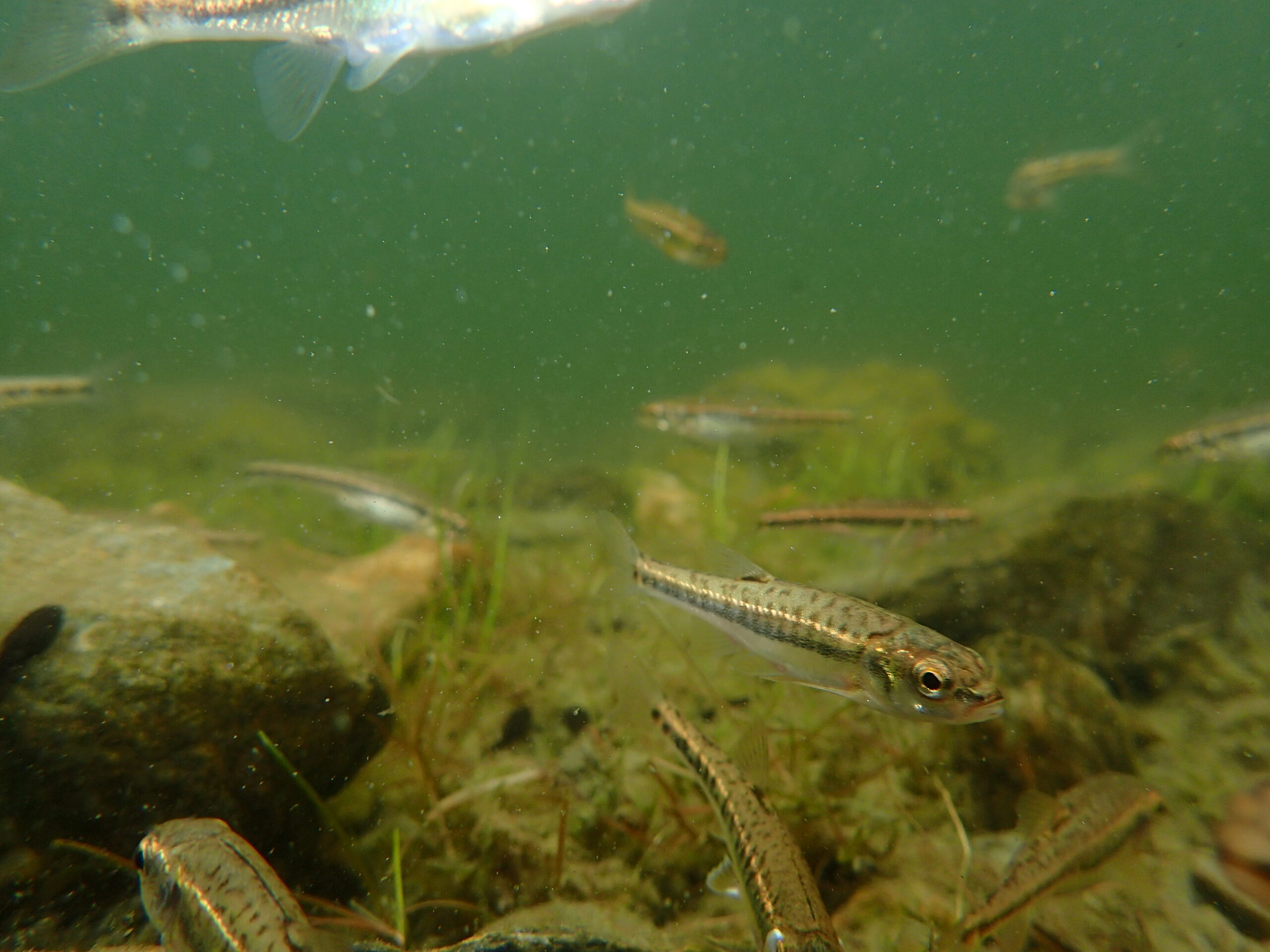Biodiversity in high mountain lakes is greater than one might notice at first glance.
It goes from tiny organisms such as microscopic algae and small crustaceans that are part of the plankton to plants, molluscs, worms, insects and amphibians that live both at the bottom and on the shore of the lake and which because of their nocturnal habits can be difficult to observe.

The introduction of fish into these lakes has had negative consequences on native fauna, affecting the structure and balance of the entire ecosystem, and altering the food web. Additionally, the impact of these introductions can also affect terrestrial fauna populations such as birds, bats, and small mammals like the desman, which rely on aquatic insects as a food source.
Ecological alterations due to invasive fish
For example, in a lake with trout, amphibians begin to disappear and there is a significant disruption in the food web in the littoral zone where fish consume larger macroinvertebrates. The negative effects increase when, in addition to trout, we find the minnow, a small cyprinid introduced into many Pyrenean lakes for use as live bait in trout fishing.
When both minnows and trout are present in a lake, there is severe impact on the littoral food web. Predation by minnows on trout spawns and overfishing can lead to the disappearance of trout.
In lakes where only minnows remain, both the littoral and pelagic food webs are affected due to increased nutrient levels favoring the growth of microalgae and decreasing water transparency.

Restoration of high mountain lakes
The restoration of these ecosystems requires the elimination of introduced fish species by simultaneously using different capture techniques such as nets, traps and electrofishing.

It is highly laborious and artisanal work that can last between two and three years in lakes with trout and up to seven with minnow. We consider a lake restored when there is natural recolonization by native species from nearby lakes.
The most ambitious actions of the LIFE RESQUE ALPYR project include the eradication of minnow in medium lakes both in the Pyrenees and in the Alps to promote the recovery of amphibian populations, small semi-aquatic mammals such as the Pyrenean desman or the water shrew and some species of bats and of the lake habitat.




